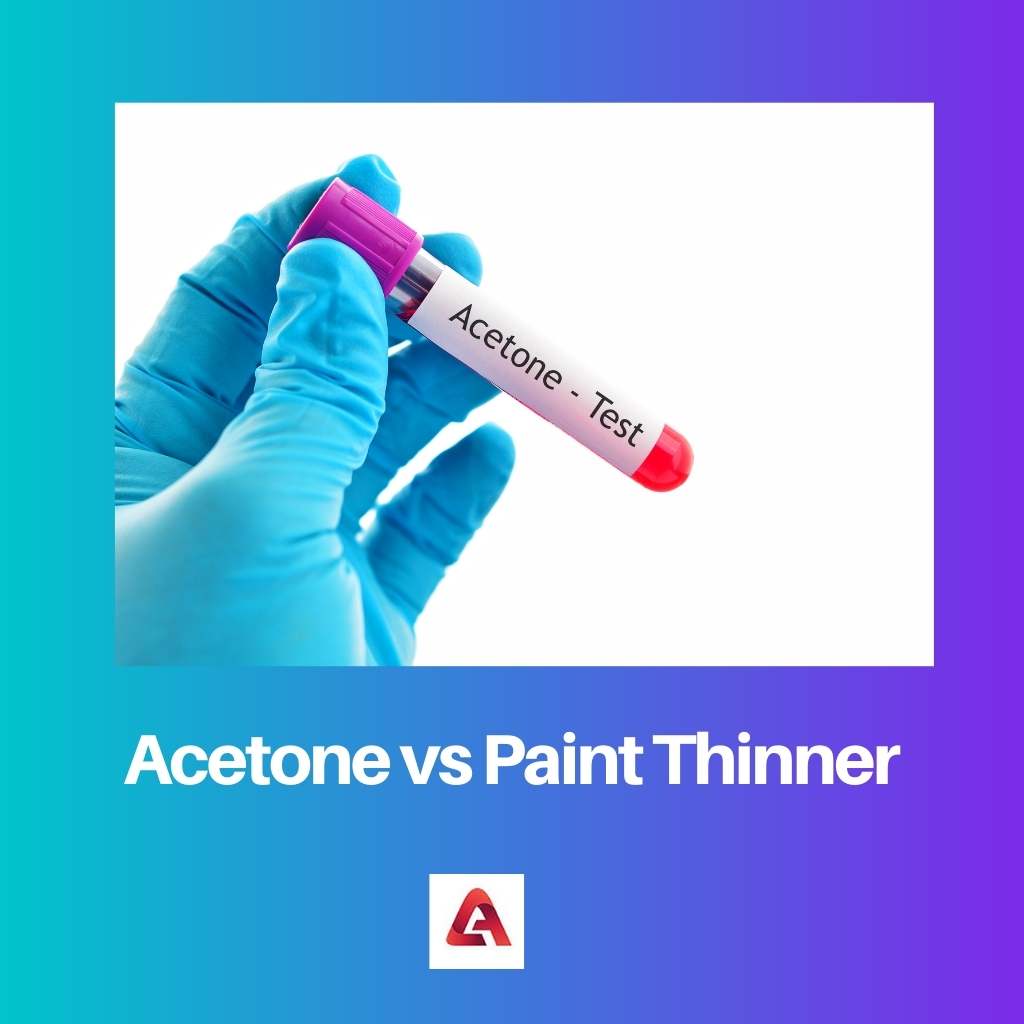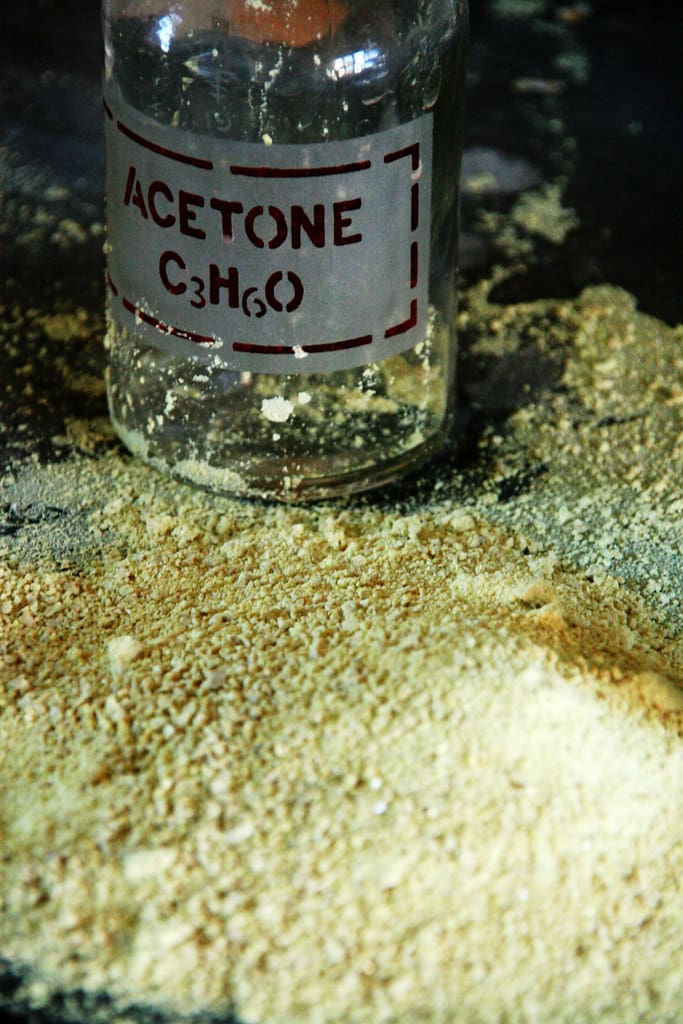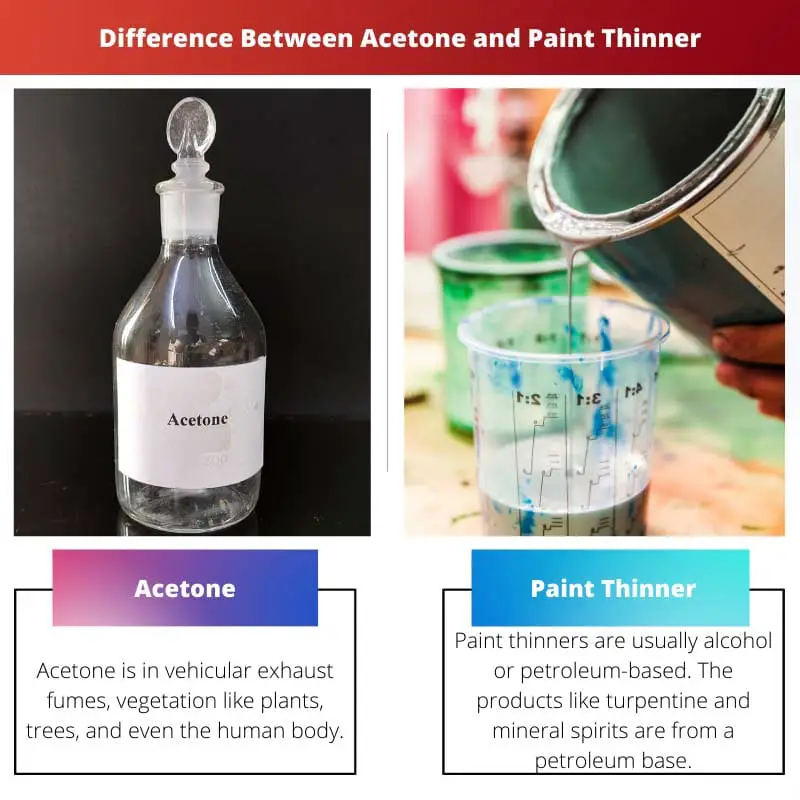One may not be aware of or involved in construction activities, but painting is something that is common knowledge.
When talking about painting, two terms come into play and are misunderstood for their purpose. There is constant confusion between the selection of acetone and paint thinner as the solvent material.
Key Takeaways
- Acetone is an organic compound that is colorless, volatile, and highly flammable, while paint thinner is a mixture of various solvents.
- Acetone is a more aggressive solvent used for dissolving and removing various types of paint, whereas paint thinner is designed specifically for thinning oil-based paints.
- Both substances have different safety precautions; acetone is highly flammable and evaporates quickly, while paint thinner is less flammable but emits harmful fumes.
Acetone vs Paint Thinner
Acetone is a more powerful solvent than paint thinner and can dissolve a wider range of substances. It is also more volatile and evaporates more quickly than paint thinner. Paint thinner is used to thin oil-based paints and to clean painting tools. Acetone is used as a paint thinner.

Acetone is in vehicular exhaust fumes, vegetation like plants, trees, and even the human body. It is a volatile liquid known for its combustible characteristic.
Another distinguishing feature is its typical pungent odor. The smell of acetone is known to cause injury and discomfort. The milder symptoms induced are headaches and nausea.
Paint thinners are alcohol or petroleum-based. The products like turpentine and mineral spirits are from a petroleum base. They assist in dissolving/decreasing the thickness of oil-based paints.
Paint thinners have a relatively sweet smell. However, prolonged exposure to the vapor can affect the nose, throat, and eyes, causing irritation and redness.
Comparison Table
| Parameters of Comparison | Acetone | Paint Thinner |
|---|---|---|
| Technical term | It is otherwise called 2-propanone. | It is also described as mineral spirits. |
| Define | It is an organic compound that is used as a solvent. | It is a chemical compound that acts as a solvent. |
| Property | Acetone is corrosive to plastic. | Paint thinner is not corrosive to plastics. |
| Classification | It is the simplest classification of a Ketone. | It is classified based on the hazard level. |
| Application | It is used to thin down lacquer. | It is used to alter the consistency of the paint mixture. |
What is Acetone?
The raw materials required for the production of acetone are benzene and propylene. The cumene formed initially undergoes several reactions starting with oxidization to synthesize acetone.
The cumene process converts raw materials, having low value, into acetone.
The finished products have higher demand. Acetone mixes well with water and other liquids like methanol, ethanol, and chloroform.
It is characterized by a boiling point of approximately fifty-six and a melting point of about ninety-five degrees Celsius. It derives its name from its classification into the acetyl group.
The toxicity of acetone is minimal and does not have adverse impacts. Acetone is a key raw material that kickstarts several types of chemical reactions.
Based on the purity, acetone is graded as technical, reagent, and USP grade. The organic impurities that are found affect the stability of this solvent.
Technical grade is unsuitable in most cases for domestic use due to the high contamination levels. While the contamination levels of reagent grades are significantly lesser, they still don’t make the cut for the food grade.
Categorized as the purest grade of acetone, USP is used in food packaging and processing. It is also used in the medical field for sterilizing tools and equipment.

What is Paint Thinner?
Paint thinners are primarily used in the paint preparation process. They are also useful for cleaning and removing thick material buildups like tar.
These thinners should be handled with care and stored carefully. It is because these materials are flammable and toxic. Paint thinners pose a fire risk at forty degrees Celsius.
Mild exposure to paint thinners can induce nausea, diarrhea, weakness, and muscle twitches. In more severe conditions, they may even cause convulsions and prove to be fatal.
The composition of several paint thinners contains hydrogen chloride. There are two broad classifications under paint thinners. They can either be oil-based or water-based.
The different types of thinners include turpentine, lacquer thinners, alcohol, and mineral spirits.
Turpentine is effective for cleaning yet is not a popular choice for thinning paint unless the budget is tight.
Mineral spirits have the advantage of being odorless and are suitable for enamel paint. But the major drawback posed is that they vaporize very fast.
Lacquer thinners guarantee good performance and finishes. They are also used to clean brushes and remove traces left by adhesives. Alcohol is used for shellac paints.
Shellac is a resin-based paint that acts as a sealant for wood and other materials.
Main Differences Between Acetone and Paint Thinner
- Acetone is alternatively known as dimethyl ketone. Paint thinners are known by several names. A few of them are glycol ethers, naphtha, and toluene.
- Over long periods, acetone reacts to plastic and can cause softening of the surface. Paint thinners are mixed with paint to alter their thickness. This allows the easy spread of the mixture during application.
- Acetone does not affect metals like carbon steel but reacts when in contact with plastic. It softens the surface and can also dissolve it. Paint thinners may occasionally react with soft plastic and dissolve styrofoam.
- Acetone has different classifications known as grades based on purity. Paint thinners are classified by their base, use, and level of toxicity.
- Acetone is used in the lab manufacture of textiles and plastics. Paint thinners are used to remove grease and other stains.




